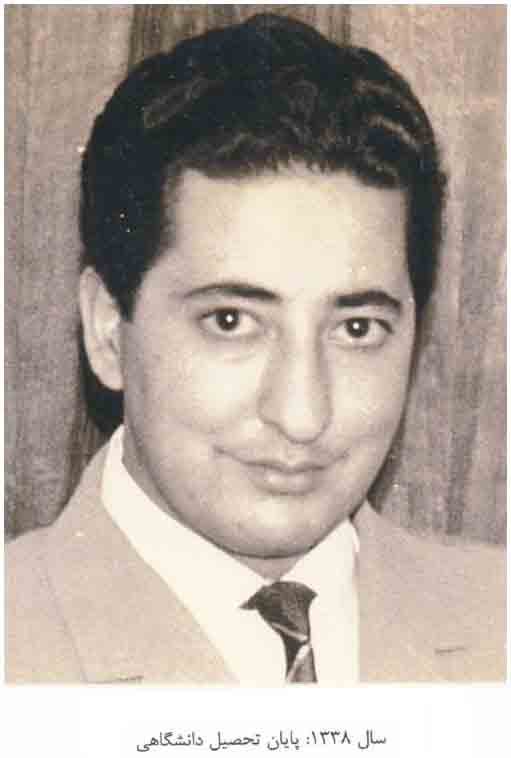- Abolhassan Banisadr
Infobox_President
name = Abolhassan Banisadr

imagesize = 150px
birth_date = birth date and age|1933|03|22
birth_place =Hamadan [ [http://www.answers.com/Abolhasan%20Bani%20Sadr Abolhasan Bani Sadr: Information and Much More from Answers.com ] ] ,Iran
office = 1st President of the Islamic Republic of Iran
term_start =4 February 1980
term_end =21 June 1981
leader =Ruhollah Khomeini
predecessor = "Office Created"
successor =Mohammad-Ali Rajai
office2 = Interm Minister of Foreign Affairs
term_start2 =12 November 1979
term_end2 =29 November 1979
predecessor2 =Ebrahim Yazdi
successor2 =Sadegh Ghotbzadeh
party = Independent
religion =Twelver Shia Islam Abol-hassan Banisadr (Persian: ابوالحسن بنیصدر; born
22 March 1933 ) was the firstPresident of Iran , following the 1979Iranian Revolution and the abolition of the monarchy.Early life
Banisadr had participated in the anti-
Shah student movement during the early 1960s, was imprisoned twice, and was wounded during an uprising in 1963. He then fled toFrance and joined the Iranian resistance group led byAyatollah Ruhollah Khomeini . Banisadr returned to Iran together with Khomeini as the revolution was beginning in February 1979. He was the deputy economy and finance minister and actingforeign minister briefly during 1979, and thefinance minister from 1979 to 1980. He studied Finance and Economics in France (BA and MBA).Presidency
He was elected to a four year term as President on
January 25 ,1980 , receiving 78.9 percent of the vote in a competitive election againstAhmad Madani ,Hassan Habibi ,Sadegh Tabatabaee ,Dariush Forouhar ,Sadegh Ghotbzadeh ,Kazem Sami ,Mohammad Makri ,Hassan Ghafourifard , andHassan Ayat , and inaugurated onFebruary 4 . The Ayatollah Khomeini remained the Supreme Leader of Iran, with the constitutional authority to dismiss the President. The inaugural ceremonies were held at the hospital where Khomeini was recovering from a heart ailment. [ Facts on File 1980 Yearbook, p88 ]Banisadr was not an Islamic cleric. The Ayatollah had insisted that clerics should not run for positions in the government. In August and September, 1980, Banisadr survived two
helicopter crashes near the Iranian border withIraq .Banisadr soon fell out with Ayatollah Khomeini. So, accusingFact|date=February 2007 Banisadr of a weak performance in leading Iranian troops in the
Iran–Iraq War , Khomeini reclaimed the power ofCommander-in-Chief onJune 10 1981 that he had delegated to Banisadr.Impeachment
Banisadr was impeached on
June 21 ,1981 by the Majlis (the Iranian Parliament), allegedly because of his moves against the clerics in powerFact|date=May 2008 , most specificallyMohammad Beheshti , the head of the judicial system at the time. Ayatollah Khomeini appears to have instigated the impeachment, which he signed the next day onJune 22 . Even before Ayatollah Khomeini had signed the impeachment papers, the Pasdaran had seized the Presidential buildings and gardens and imprisoned newspaper writers who worked for a newspaper closely tied to Banisadr. In the next few days, they also executed several of his closest friends, including Hossein Navab, Rashid Sadrolhefazi, and Manouchehr Massoudi. Ayatollah Montazeri was amongst the few people in the government in support of Banisadr. However later on Ayatollah Montazeri was stripped of his powers and jailed in the subsequent years. It was revealed later that the group of guards who were assigned to capture Banisadr were told to finish him off rather than get him to jail Fact|date=February 2007. Banisadr remained in hiding for the next six weeks. OnJuly 10 ,1981 , he shaved hismoustache , donned anIranian Air Force uniform, and boarded aBoeing 707 piloted by Colonel Behzad Moezi. The plane followed a route close to the Turkish border before veering into Turkishairspace , where Iranian jets could not pursue. Banisadr then flew fromTurkey toCachan ,Paris ,France , along withMassoud Rajavi , former leader of the Mojahedin. He lives inVersailles , nearParis , in avilla closely guarded byFrench police .References
External links
* [http://www.banisadr.com.fr/ Abolhassan Banisadr's Persian website]
* [http://www.answers.com/Abolhasan%20Bani%20Sadr "Abolhasan Bani Sadr." Encyclopedia of the Modern Middle East and North Africa. The Gale Group, Inc, 2004. Answers.com]
Wikimedia Foundation. 2010.
